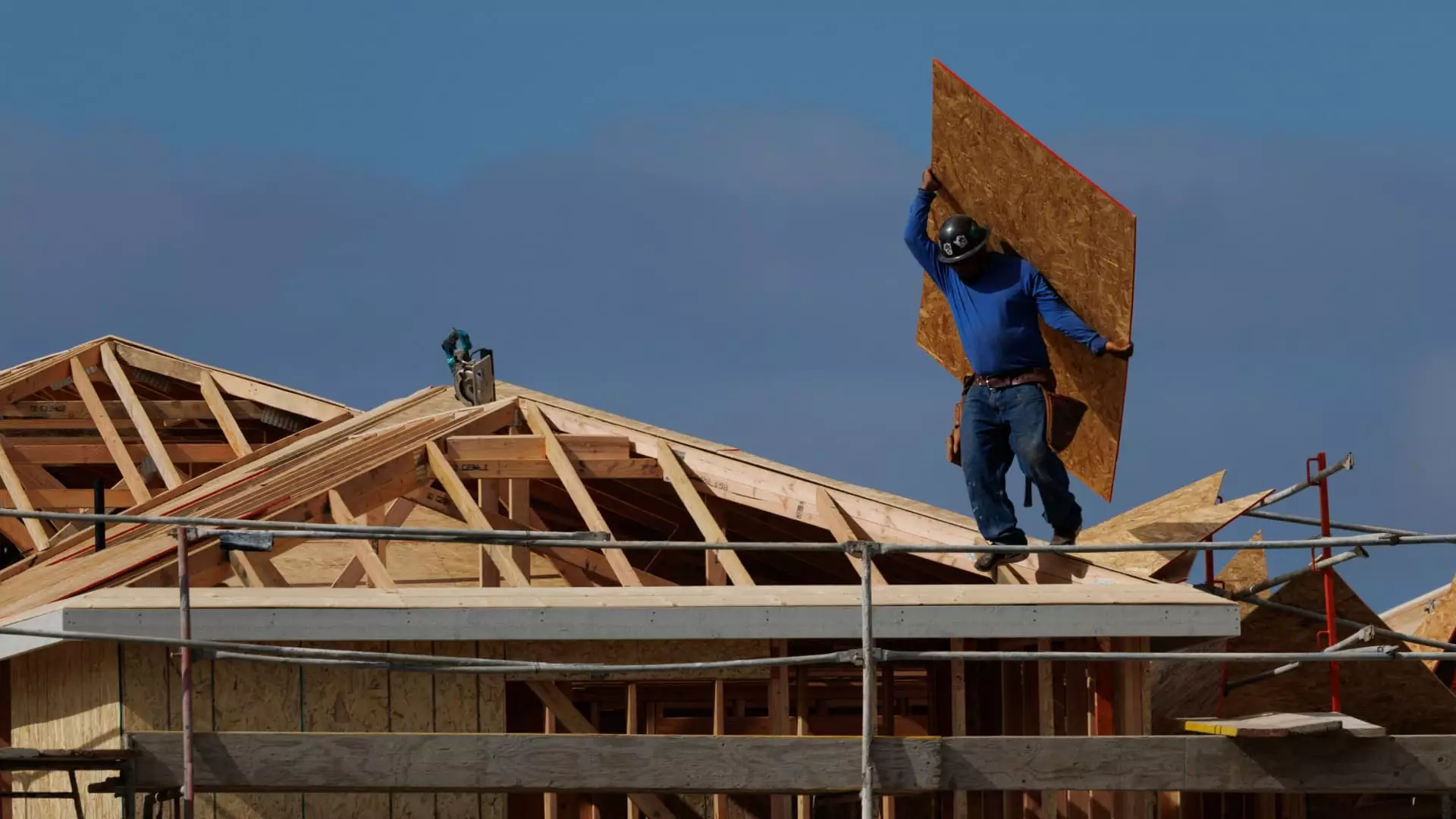Despite the veneer of cautious optimism presented by recent marginal shifts in builder confidence, the core health of the U.S. housing market remains deeply troubled. The latest data reveals a persistent decline in homebuilder sentiment, a clear sign that underlying economic uncertainties are intensifying rather than abating. The NAHB index, a critical barometer of construction industry mood, hovered just above the negative threshold in July, signaling ongoing struggles beneath the surface. While a slight uptick from 32 to 33 may seem encouraging at first glance, the reality is that this modest change masks a deeper malaise where negative sentiment has been entrenched for over a year and a half. Such stagnation underscores fundamental flaws in the housing economy that, if unaddressed, could lead to a systemic downturn.
Price Cuts: A Symptom, Not a Solution
In an effort to stabilize sales, homebuilders have resorted to aggressive price reductions—38% of them, the highest in the past two years, reported slashing prices by an average of 5% in July alone. This strategy, while providing short-term relief, exposes the fragility of the current housing ecosystem. Price cuts signal that buyers remain hesitant, perhaps wary of the broader economic outlook, inflationary pressures, or persistent high mortgage rates. However, reducing prices is an admission of failure to stimulate demand through improved product appeal or marketing. Historically, such tactics tend to erode profit margins, forcing builders into a bind where volume gains cannot fully compensate for diminished gross margins, especially when mortgage rate buy-downs are employed but fall short of driving sustained sales growth.
Mortgage Rates and Affordability: The Hidden Obstacle
The crux of the housing dilemma lies in affordability. Despite recent legislative efforts to bolster economic momentum through tax relief, mortgage rates remain stubbornly elevated, hovering around levels that choke off potential buyers’ purchasing power. This is not a coincidence but an outcome of broader monetary policy settings, inflationary pressures, and global financial conditions. The combination creates a perfect storm: higher monthly payments discourage first-time buyers and middle-class families from committing to homeownership. The result is a precipitous drop in buyer traffic—at its lowest point since late 2022—indicating that the demand necessary to sustain a healthy market simply isn’t there. This persistent affordability crisis is locking many prospective buyers out of the market, further weakening demand and pushing prices downward.
The Illusion of Confidence and the Reality of Decline
While some economic indicators suggest cautious optimism—sales expectations are slightly higher and current sales conditions edged up—these are superficial signs that mask a more troubling long-term outlook. The number of buyer inquiries is at a two-year low, and construction starts are forecasted to decline further in 2025. This decline is fueled by an interplay of low buyer traffic, hesitant builders, and an uncertain economic landscape. Notably, regional disparities reveal that the Northeast is relatively more optimistic, but the South and West continue to face substantial declines, further illustrating a fractured housing landscape. If the trend persists, we risk a scenario where the housing market, which has historically acted as a key economic engine, could plunge into sustained stagnation or worse, contraction.
Why the Center-Right Conservative Approach Matters
From a center-right perspective, it’s clear that market interventions, such as price reductions and temporary tax relief, are Band-Aids rather than cures. A prudent strategy involves creating a stable economic environment that fosters sustainable growth—through controlled regulation, balanced monetary policies, and incentivizing investment in housing infrastructure. Overreliance on artificial stimulation, like buy-downs or short-term tax cuts, merely postpones the inevitable and risks deepening the downturn once the short-lived effects fade. To truly fortify the housing market, there must be a focus on enhancing affordability through pragmatic economic reforms, reducing regulatory burdens, and encouraging responsible lending practices. Only then can the sector rebuild confidence and pave a path toward genuine growth, rather than a dance of temporary fixes that ultimately lead to greater instability.

